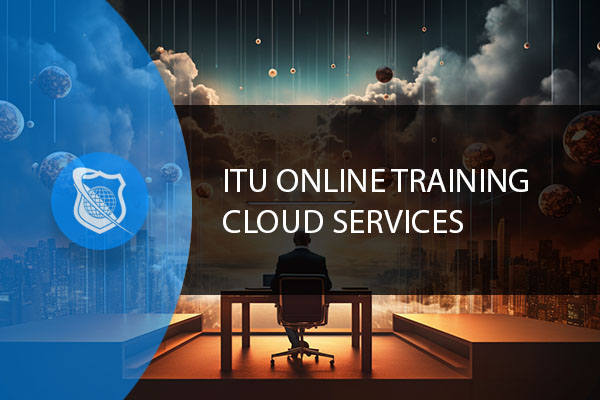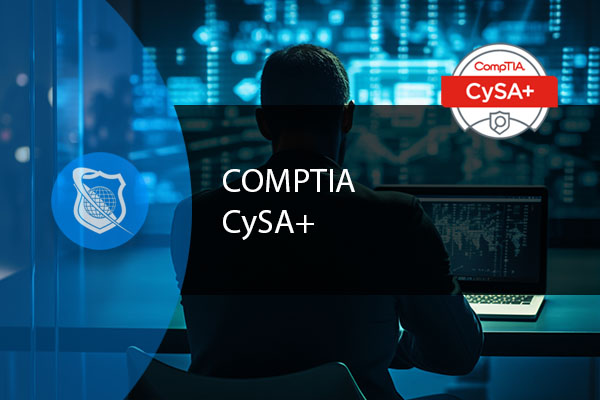What Is Accelerometer
An accelerometer is a device that measures the acceleration it experiences relative to freefall and uses this to calculate the velocity and position of the object it is attached to.

Identity and Access Management (IAM) is a crucial aspect of managing cloud services and enterprise security. In this blog post, we delve into the complexities of IAM, discussing its key components like transitive trust, federated identity management (FIM), single sign-on (SSO), and multi-factor authentication (MFA). We aim to provide a comprehensive understanding of how IAM functions in a cloud environment, focusing on AWS as a primary example.
IAM is the backbone of organizational security, determining who has access to what services and resources. For instance, in AWS, an administrator might have complete access, but specific users may be restricted to certain resources. This selective access necessitates a thorough understanding of access policies and approval processes in cloud services.
This comprehensive training series is designed to provide both new and experienced network administrators with a robust skillset enabling you to manager current and networks of the future.
Transitive trust is a fundamental concept in IAM, involving a two-way trust relationship between on-premises and cloud services, or between two cloud services. Federated Identity Management (FIM) extends this idea, allowing users with shared identification data to access necessary resources across an enterprise’s architecture. AWS, for instance, enables the setup of trusted entities like EC2, Lambda, or other AWS services.
Transitive Trust in Cloud Environments: Transitive trust is a pivotal concept in cloud security and IAM. It refers to a reciprocal relationship where two entities (such as cloud and on-premises systems) mutually recognize and accept each other’s authentication and authorization processes. This trust is ‘transitive’ because it extends beyond a direct relationship, allowing for a chain of trust among multiple entities. For example, if System A trusts System B, and System B trusts System C, transitive trust would imply that System A also trusts System C. In cloud environments, this becomes particularly crucial as it enables seamless integration and communication between different services and platforms.
Federated Identity Management (FIM): FIM is an advanced application of transitive trust. It involves creating a unified security and access policy across multiple domains or systems. In simpler terms, FIM allows a user’s identity and credentials to be shared and accepted across different systems without the need for separate authentication processes in each. This system is particularly effective in cloud computing, where resources are often spread across different platforms and services.
How FIM Works in Practice: Consider an employee who needs to access multiple cloud services like AWS for development, Salesforce for customer management, and Microsoft 365 for office productivity. Instead of managing separate credentials for each service, FIM allows the employee to log in once using a corporate account (like Microsoft Active Directory). The identity provider verifies the credentials and communicates with each service provider to grant access. This process is usually seamless to the user and happens in real-time.

At ITU, we offer an exclusive Cloud Computing training series designed to prepare you for certification and/or to help you gain knowlege of all Cloud based platforms including AWS, Azure and Gooogle Cloud.
Get access to this exclusive Cloud Computing Training today.
Challenges and Considerations: While FIM offers many advantages, it also presents challenges like managing the complexity of integrating different systems and ensuring the security of the central identity provider. A breach in the IdP can potentially compromise all connected systems. Therefore, robust security measures, regular audits, and a comprehensive understanding of the architecture are essential for safely implementing FIM and transitive trust in an organization’s IAM strategy.
ITU provides you with a select grouping of courses desgined specfically to guide you on your career path. To help you best succeed, these specialized career path training series offer you all the essentials needed to begin or excel in your choosen IT career.
SSO simplifies user authentication by allowing one set of login credentials to access multiple applications. MFA adds an extra layer of security, requiring at least two forms of user verification, like a password and a mobile text code. These methods enhance security while providing user convenience.
SSO is a user authentication service that allows a user to use one set of login credentials (e.g., name and password) to access multiple applications. The primary goal of SSO is to streamline the user experience by reducing the number of times a user needs to log in to access different services and applications.
MFA enhances security by requiring two or more verification factors to gain access to a resource such as an application, online account, or a VPN. These factors can include something the user knows (like a password or PIN), something the user has (like a smartphone app or a hardware token), and something the user is (like a fingerprint or other biometric method).
Integrating SSO with MFA offers a balance between convenience and security. Users enjoy the simplicity of SSO along with the enhanced security of MFA. For example, a user might log in once using SSO and then perform MFA verification to access more sensitive systems or information. This combination is particularly effective in environments where security is paramount but user experience cannot be compromised.
Implementing SSO and MFA requires careful planning, considering factors like user behavior, the sensitivity of data being accessed, and the overall security architecture of the organization. By effectively combining these technologies, organizations can create a robust security posture that protects critical assets while maintaining a positive user experience.
The role of Identity and Access Management (IAM) in cloud security is multifaceted and critical for ensuring that the right individuals have access to the appropriate resources in cloud environments. As organizations increasingly adopt cloud services, the complexity and importance of effective IAM strategies have grown significantly.
Centralized Control Over User Access:
Enhanced Security Posture:
Compliance and Auditing:
Seamless Integration Across Multiple Platforms:
Adaptability and Scalability:
Challenges in IAM for Cloud Security:
IAM’s role in cloud security is indispensable. It not only ensures that the right people have access to the right resources but also underpins the organization’s ability to comply with regulations, audit user activities, and adapt to the evolving cloud landscape. Effective IAM strategies strike a balance between robust security and user convenience, scaling as the organization grows, and integrating seamlessly with both cloud and on-premises environments. As cloud adoption continues to rise, the importance of IAM in maintaining a secure and efficient cloud environment cannot be overstated.

Ready to fortify digital landscapes? Unleash your potential with our CySA+ course. Master behavioral analytics, shield networks, and become a certified defender against cyber threats. Elevate your security prowess, ace the CompTIA CySA+ (CS0-003) exam, and secure a resilient future for organizations
For professionals preparing for security certifications, understanding IAM’s role in compliance and data protection is crucial. Questions may focus on detecting compliance data and the tools used for its protection, like DLP and PAM. Understanding the flow of MFA and its implementation in different scenarios, such as banking, is also essential.
IAM is a critical component of cloud services security, requiring a nuanced understanding of concepts like transitive trust, FIM, SSO, and MFA. As cloud services evolve, staying informed about these aspects is paramount for security professionals. Whether you’re an AWS administrator, a security architect, or preparing for a certification exam, a deep understanding of IAM is indispensable for navigating the complexities of cloud security.

At ITU, we offer an exclusive Cloud Computing training series designed to prepare you for certification and/or to help you gain knowlege of all Cloud based platforms including AWS, Azure and Gooogle Cloud.
Get access to this exclusive Cloud Computing Training today.
Identity and Access Management (IAM) in cloud services is a crucial aspect of cybersecurity and IT management. Understanding the key terms related to IAM is essential for professionals working in cloud computing, cybersecurity, IT management, and related fields. These terms help in navigating the complexities of managing user identities and permissions, ensuring secure access to cloud resources, and complying with various regulatory requirements. Below is a list of key terms and their definitions to enhance your understanding of IAM in cloud services.
| Term | Definition |
|---|---|
| Identity and Access Management (IAM) | A framework of policies and technologies ensuring the right individuals access the appropriate resources at the right times for the right reasons. |
| Authentication | The process of verifying the identity of a user or device. |
| Authorization | The process of granting or denying specific permissions to a user, group, or role. |
| Single Sign-On (SSO) | A session and user authentication service that permits a user to use one set of login credentials to access multiple applications. |
| Multi-Factor Authentication (MFA) | A security system that requires more than one method of authentication from independent categories of credentials to verify the user’s identity. |
| Role-Based Access Control (RBAC) | A method of regulating access to computer or network resources based on the roles of individual users within an organization. |
| Identity Provider (IdP) | A system entity that creates, maintains, and manages identity information for principals and provides principal authentication to other service providers within a federation. |
| Access Management | The process of identifying, tracking, controlling, and managing authorized or specified users’ access to a system, application, or any IT instance. |
| Privileged Access Management (PAM) | A sub-discipline within IAM that focuses on the special requirements of managing privileged access, such as administrative and service accounts. |
| Cloud Service Provider (CSP) | A company that offers network services, infrastructure, or business applications in the cloud. |
| Federation | A collection of networks or services that agree upon standards of operation in a collective fashion. |
| Security Assertion Markup Language (SAML) | An open standard for exchanging authentication and authorization data between parties, specifically between an identity provider and a service provider. |
| OAuth | An open standard for access delegation, commonly used as a way for Internet users to grant websites or applications access to their information on other websites but without giving them the passwords. |
| Token-Based Authentication | An authentication protocol where a server issues a token that the client uses for making API calls. |
| User Behavior Analytics (UBA) | The tracking, collecting, and assessing of user data and activities using monitoring systems. |
| Directory Services | A software system that stores, organizes, and provides access to information in a directory. |
| Public Key Infrastructure (PKI) | A set of roles, policies, hardware, software, and procedures needed to create, manage, distribute, use, store, and revoke digital certificates and manage public-key encryption. |
| Access Control List (ACL) | A table that tells a computer operating system which access rights each user has to a particular system object, like a file directory or individual file. |
| Identity Governance and Administration (IGA) | The policy-based centralized orchestration of user identity management and access control. |
| Zero Trust Model | A security concept centered on the belief that organizations should not automatically trust anything inside or outside its perimeters and instead must verify anything and everything trying to connect to its systems before granting access. |
This list provides a fundamental understanding of the terms you’ll encounter in IAM, enhancing your ability to effectively manage and secure cloud services.
IAM in cloud services is designed to manage identities and access in a cloud computing environment, which often involves managing access across multiple cloud services and platforms. Traditional IAM systems, on the other hand, are typically focused on internal networks and systems. Cloud-based IAM solutions must be more flexible and scalable to accommodate the dynamic nature of cloud resources.
MFA enhances security by requiring users to provide two or more verification factors to gain access to a cloud service, which significantly reduces the likelihood of unauthorized access. This is crucial in cloud environments where sensitive data and services are accessible over the internet.
Yes, effective IAM in cloud services can help organizations comply with various regulations like GDPR, HIPAA, and SOX. It does so by ensuring that access to sensitive data is strictly controlled and monitored, and by providing audit trails and reports that demonstrate compliance.
Challenges include integrating IAM across various cloud and on-premises systems, managing the complexities of hybrid cloud environments, ensuring consistent policy enforcement, and handling the scalability and dynamic nature of cloud services.
In a Zero Trust model, trust is never assumed and verification is required from everyone trying to access resources in the network, whether they are inside or outside the network perimeter. In cloud services, this means rigorous identity verification and access controls are applied consistently across all services and data, regardless of their location.
Lorem ipsum dolor sit amet, consectetur adipiscing elit. Ut elit tellus, luctus nec ullamcorper mattis, pulvinar dapibus leo.
$49.99 Original price was: $49.99.$16.99Current price is: $16.99. / month with a 10-day free trial
An accelerometer is a device that measures the acceleration it experiences relative to freefall and uses this to calculate the velocity and position of the object it is attached to.
Acoustic Cryptanalysis is a fascinating and complex field that lies at the intersection of cryptography, acoustics, and cybersecurity. It involves the analysis of sound waves generated by electronic devices, particularly
Adaptive Learning Systems are sophisticated educational technologies designed to customize the learning experience to meet the unique needs of each student. By analyzing a student’s performance in real-time, these systems
Address Space refers to the range of memory addresses that a system or a process can use. It plays a crucial role in computer architecture, operating systems, and networking, where
The Advanced Encryption Standard (AES), also known as Rijndael encryption, stands as a cornerstone in the field of data security. This symmetric encryption algorithm secures sensitive information, ensuring that data
Agile estimating and planning is a flexible and dynamic project management approach that focuses on delivering high-value features in short iterations. This methodology emphasizes collaboration, customer feedback, and small, measurable
Agile retrospectives are a crucial component of the Agile software development methodology, serving as a reflective meeting that occurs at the end of each sprint. It’s a dedicated time for
Agile Value Stream Mapping (VSM) is a lean-management method for analyzing the current state and designing a future state for the series of events that take a product or service
AJAX, short for Asynchronous JavaScript and XML, is a set of web development techniques using many web technologies on the client side to create asynchronous web applications. By decoupling the
Algorithmic efficiency is a fundamental concept in computer science that concerns how well an algorithm performs in terms of time and space requirements. The efficiency of an algorithm is often
Ambient User Experience (UX) refers to the seamless integration of technology into our daily lives in a way that feels natural and unobtrusive. This concept extends beyond traditional interfaces, encompassing
A blacklist is a list or register of entities denied a particular privilege, service, mobility, access, or recognition. In the context of information technology, blacklists are commonly used to restrict,
ENDING THIS WEEKEND: Train for LIFE at our lowest price. Buy once and never have to pay for IT Training Again.